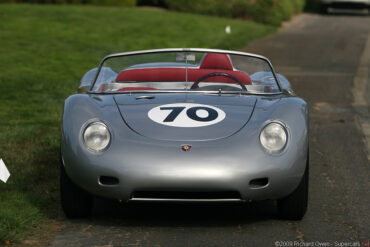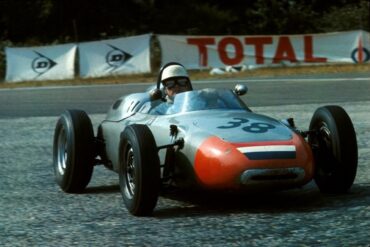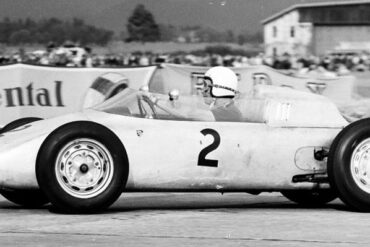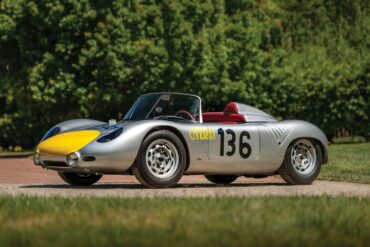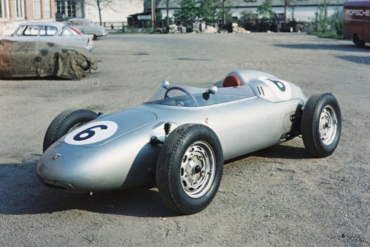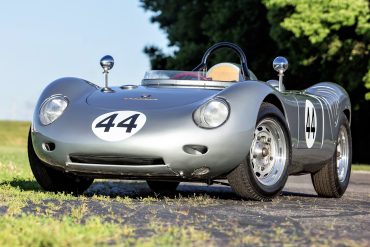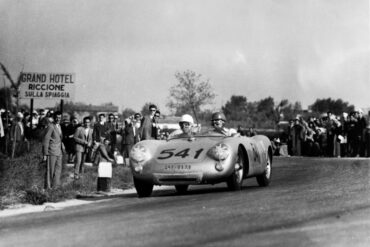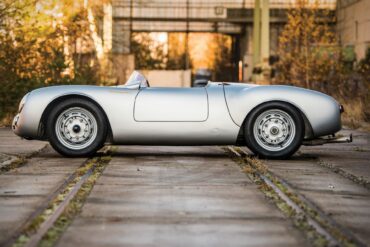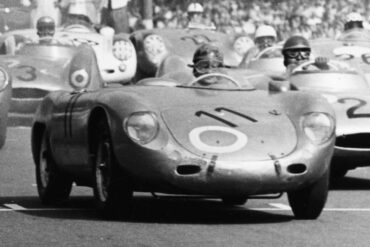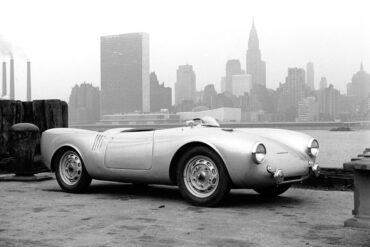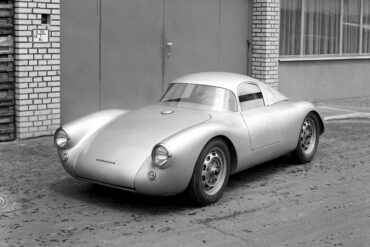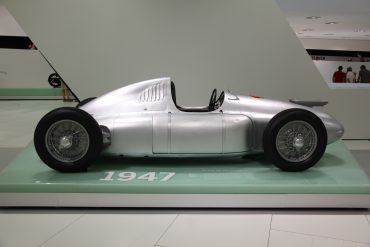The 1961 Porsche RS was one of the last Spyders made by Porsche that used the potent 4-cam engine. It was a successor to the 1960 RS60 which was a highly developed version of the original 550 RS Spyder. These diminutive racecars excelled on the tighter courses like the Targa Florio which was first won by Porsche in 1956. That victory marked the first time a sports car with a midship engine had won a major motor sports event.
Porsche Race Cars
The Porsche 787 is a Formula One (F1) racing car built and raced by Porsche for one year in 1961. The first car (a prototype) was created from the experimental Porsche F2 car with chassis number 718/2-05. The 1961 Porsche 787 was the first Porsche with fuel injection, 6-speed transmission and coil springs in all corners. Only two 787s, serial numbers 78701 and 78702, were ever built. Due to their lack of power and poor handling it was retired.
The fifth and the last of the 718/2 F2 cars, with chassis number 718/2-05 was an experimental formula racing car. It had the 718/2 chassis, but a different body. The car never got its own type number. It was a one-off car, continuous development project that later evolved into something that became the prototype for the 1961 Porsche 787 F1 car and then even for the 1962 Porsche 804 F1 car. 718/2-05, was first seen at the F2 race on Solitude race track near Stuttgart in July 1960.
For the 1960 season the FIA made changes to the regulation regarding the windscreen and cockpit size. These rules changes together with a larger (1.6-litre) Type 547/3 engine, developing 160 horsepower (120 kW) and a new double wishbone rear suspension brought about the RS 60 model. The RS 60 brought Porsche victory at the 1960 12 Hours of Sebring with a car driven by Hans Herrmann and Olivier Gendebien. 1960 also saw Porsche win the Targa Florio with Hans Herrmann being joined on the winner podium by Jo Bonnier and Graham Hill. z
In 1959 Porsche unveiled the prototype of a narrow, open-wheeled car called the Porsche 718/2 that married the 718's mechanicals with a more traditional single-seat Formula body. For 1960 the production 718/2, starting with chassis number 718201, received revised bodywork, a 6-speed transaxle, and a wheelbase extended by 100 mm. A total of five cars were built. Some of these four-cylinder cars were later raced in F1 under the 1962 1½ litre formula.
Porsche created the single-seat 718 RSK Mittellenker (center steering) to compete in Formula 2 racing. The body differed from the 718 2-seat sports racer only to accommodate the central driving position, with revised seat, steering, shifter and pedal placement, and the aerodynamic fairing behind the driver’s head moved from the left to the middle. Instead of having a full-width cockpit, the body sides were extended toward the center to create a space solely for the single driver, with a short, wrap-around windshield.
The 550A was based on Porsche’s first purpose-built racing car, the mid-engined RS 550 Spyder. Appearing at the end of 1956, the 550A differed from its predecessor by use of a full tube spaceframe with several rear supportive cross-members, rather than the heavier welded-up sheet steel internal structure of the 550. The rear swing axles of the 550 were replaced by a new low-pivot arrangement that made handling much more predictable.
The Porsche 550 Spyder was introduced at the 1953 Paris Auto Show. It was simple, small and packed a real punch. It was Porsche's first production racing car. The car was completely street legal, so it could be driven to the races and back home. A really special engine was developed for it, engineered by Ernst Fuhrmann. It was a flat DOHC engine, meaning it had 4 overhead camshafts like the Porsche type 360 design for Formula 1.
Planned as a successor to the Porsche 550. A one off prototype was the 1956 super-light design utilising one of the spare 550 frames – 550-098 called ‘Mickey Maus’ which, with Richard von Frankenberg at the wheel, was reduced to a melted wreck that same year in a spectacular crash at the Avus race track. Known as Type 645, it was the beginnings of the new Type 718 Porsche with a shorter wheel base and unique suspension.
In 1953 Porsche created a series of 550 prototypes and 550-03 became the most important car in Porsche history by winning the 1954 Carrera Panamerica with Hans Herrmann at the wheel. This singular victory lent the Carrera nameplate to future models and also marked the first international victory of a mid-engine car. Only 15 prototypes were made until regular production began in 1954 of the Porsche RS Spyder.
One year before Porsche started production of the legendary RS Spyder, they experimented several unique 550 Prototypes. Two of these were fitted with removable hardtops that transformed the diminutive roadster into a sleek coupe. These were quite successful on faster circuits, but the roadster was later preferred as a more saleable car. The Coupes were retained by the factory to contest the Carrera Panamericana race.
The Cisitalia Grand Prix is a single-seater car for the postwar 1.5-litre supercharged Grand Prix class, built by Italian sports car manufacturer Cisitalia and introduced in 1949. It was designed on behalf of Cisitalia by Porsche between 1946–47, and is therefore also known by its Porsche project number, Typ 360. An extremely advanced design, it proved too complex to build for the small Italian firm (and lead to the financial downfall of the company).
No More Content


